Saturday, June 22nd, 2019.
In this Daily: The Fountains of Las Catalinas
Walking around Las Catalinas, you spot quite a few fountains, each adding a unique character to the beach town. However, these sculpted fountains are more than decorative, and each brings their own history and purpose to the design and urbanism of Las Catalinas.
The Historical Purpose of Fountains
Dating back more than 2000 years, the most basic purposes of fountains was to provide water as a public resource because it was not yet widely available in private homes. As a result, these early fountains were simple and functional. People would go to the town well or fountain for their water daily. Over time, fountains evolved to celebrate the water, with elaborate fountains showing civic pride or wealth.
Their first uses in private homes began as advancements were made in plumbing technology. It was in these private homes that fountains began to be used for both form and function. Providing evaporative cooling in addition to beauty. This can be seen in stair hall in Carlota where airflow over the fountain cools the entire space.
In present day Las Catalinas, these fountains are a way to bring the ocean into town. The spaces in town that don’t have a direct view of the sea will always have a fountain. This serves as a refreshing spot in the public realm, making these spaces both more beautiful and more pleasant. They are an important centerpiece of the principles of Urbanism in Las Catalinas that we strive for.
The Fountains of Town
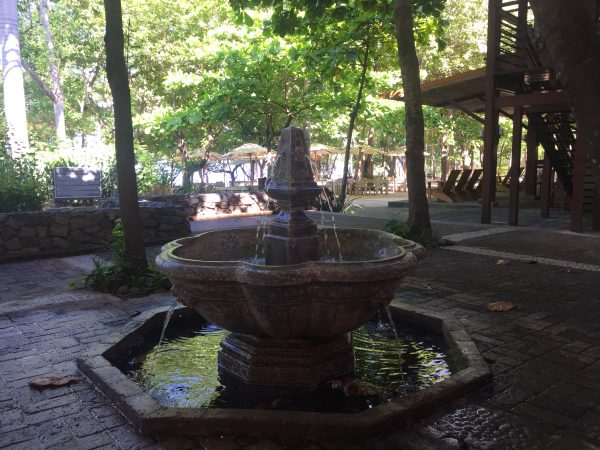
One of our first fountains in town. The shape/geometry is an arabesque representation of a flower. A common shape in architecture and fountains. The octagonal base transitions to the square fountain obelisk through this transitional shape which bridges the 8-sided figure with the 4-sided figure. A fun fountain for little kids to splash around in.
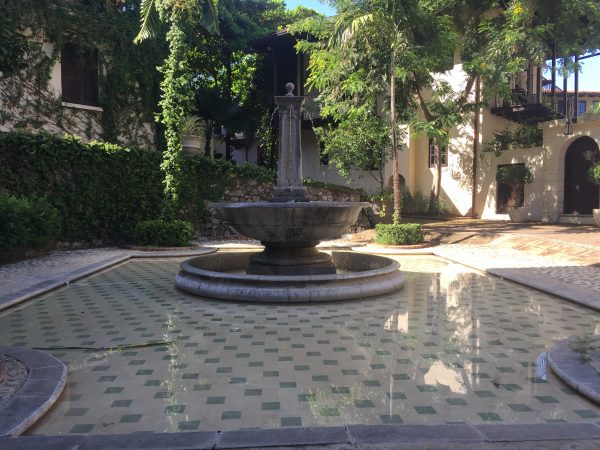
In addition to its beauty, the practical purpose of this fountain was initially to provide relief for storm water in high rains. The Cuban tile floor is a classic, elegant pattern. It’s really the focal point the plaza. The height of the center obelisk acts as a navigation marker for all who lead and pass through this plaza. It’s wonderful to walk through on a hot day and just get your feet wet. We’ve also hosted live music in the fountain, playing for cocktail parties or other gatherings.
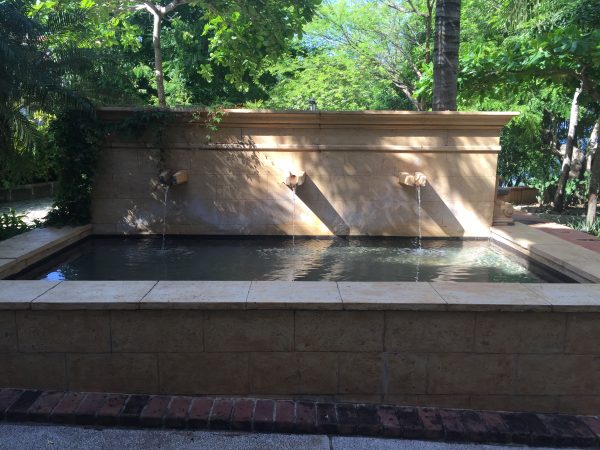
The depth of the water of this fountain gives a pleasant, deep sound to the water. Because of this, the fountain adds a great background to the plaza and homes around it. The edge is at sitting height, so it’s a comfortable spot for a break.
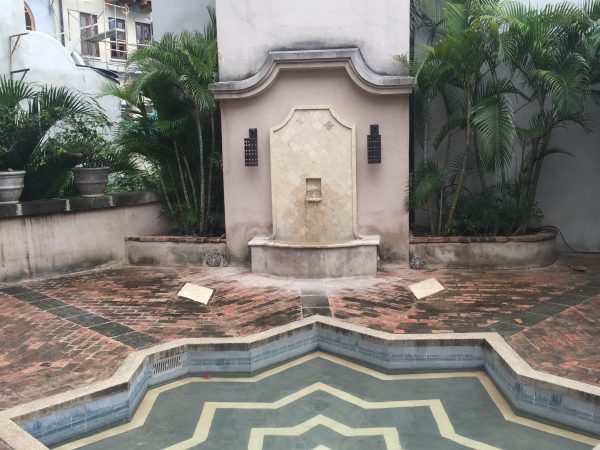
The fountain feature wall is Coralina stone. This fountain serves as the visual terminus of the water channel that comes down the steps from Plaza Lucia. The base of this is also perfect seating height. The lanterns to either side were custom made for the home. It was designed by former town architect Ryan Nelson.
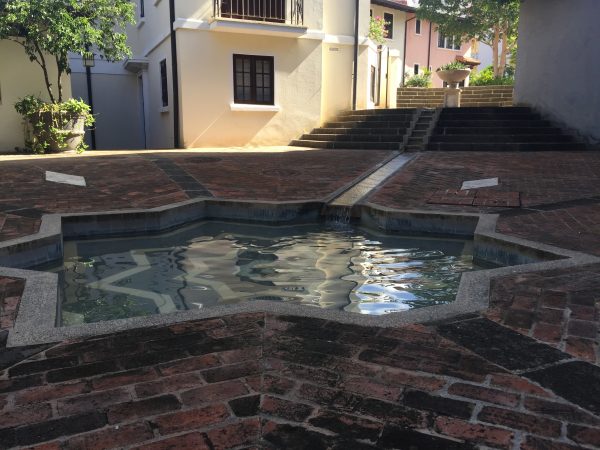
The Star Fountain
Inspired by el Alhambra in Andalucia, Spain, the namesake of this plaza. The Cuban tiles in the fountain are a gorgeous blue and white. The blue was inspired by the colors of Andalucia and Casa Indigo. AS a result, the fountain serves a practical purpose of managing surface water from rains, and is a favorite for anyone who enjoys splashing around. Designed by Ryan Nelson.
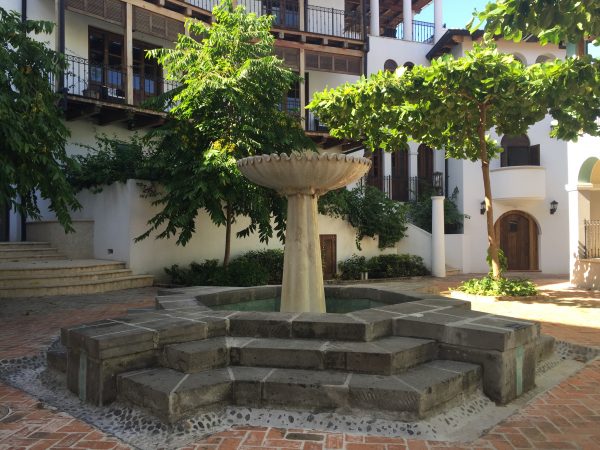
The Fountain at Charlotte's Plaza
This fountain was designed by Michael Imber Architects as a connection between the Carlota Flats and Plaza Lucia. The shape of the fountain is created in the negative space of the planters as if it has been “carved out." The form is arabesque as well which creates geometry from the natural forms of plants and flora. And again we have the base at seating height.
This fountain was inspired by Charlotte, for whom this plaza is named. She is a ballerina known for a generous, social, and friendly elegance. As a result, this fountain needed to both approachable for casual chats but also have a distinct grace.
The fountain itself is intended to be both strong and graceful, inspired by the form of a ballerina’s tutu. Radiating stairs are meant to encourage not only seating, but also climbing up to play with the water, or pretend to be statues on the four platforms.
Turquoise tiles inside the basin as well as the grays and whites are inspired from the colors of the Carlota flats. Each lip was hand carved to create the perfect droplets which both look and sound amazing. Designed by Town Architect Sara Bega.
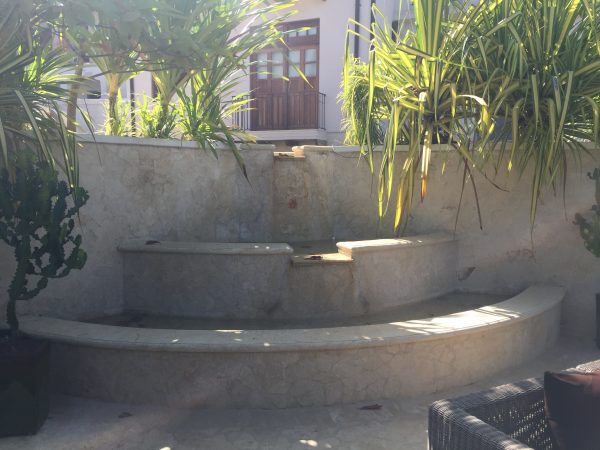
The tiered fountain of the Beach Club connects Calle Cartagena with the terrace of the Beach Club. You can enjoy the water up at the street, without entering the club, but also enjoy the fresh feel and great sound of the waterfall effect at the backdrop of the covered seating area. Designed by Ricardo Arosemena.
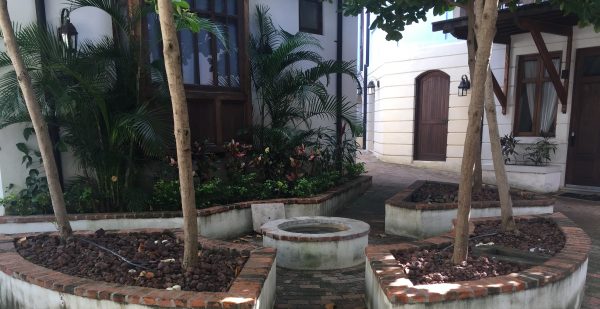
Plazoleta Lucille
This little bubbler fountain at the center of Plazoleta Lucille was designed to be a subtle water feature at the heart of the space. The little girl for which this space is named was just an infant when this fountain was installed. She used to love to watch the little bubbles and ripples made at the surface. It’s a great, shady spot for meditation as the water’s sound and ripples are very calming and encourage focus.
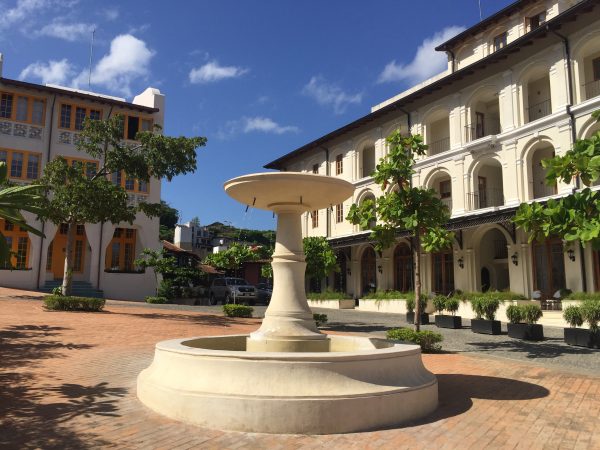
Designed by Town Architect Juan Carlos Avelar, this fountain holds an important place because it welcomes guests and residents alike. The fountain was inspired by an architectural titan who inspired the urbanism of Las Catalinas, Leon Krier. The basin is at seating height, again, to encourage rest at the foot of the fountain.
The color coordinates with Central building Due to the elegant, curved shapes, the impression of the fountain is that from whatever angles you view, you see its “front.” It’s welcoming from any perspective.
The fountains around our town are important part of the urbanism of Las Catalinas. You are never too far from a source of water, friends, family, or fun.